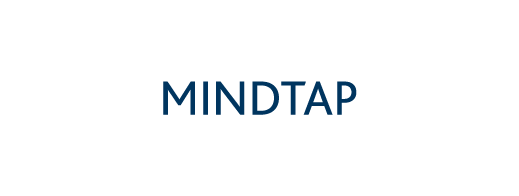Request for consultation
Your form is submitting...
Overview
Help students access their true potential with TECHNICAL WRITING FOR SUCCESS, Fourth Edition! This engaging and practical approach to workplace writing helps you guide students in the process of thinking, listening, researching, planning, composing, revising, and editing documents for use in business, science, hi-tech, and other demanding fields. Packed with active learning features from Cengage, this text makes it easy to show the importance of regular writing practice as students produce their own proposal content, manual instructions, informative briefs, lab reports, news releases, and other documents they won’t see in general communications courses. Sample documents, critical thinking questions, expanded content on oral presentations, and insightful writing advice on style and voice add to this inclusive text—empowering you empower tomorrow’s best technical writers.
- *NEW* "Writing in the Disciplines" now connect to "Writing @ Work" features throughout the readings, adding depth to these career-based vignettes, which share stories about how technical writers affect the world with their words.
- *NEW* NEW “Explore the Net” boxes show students how to use Internet research to support technical documents, show proof for claims in their writing, and boost their own credibility as writers.
- *NEW* Expanded Technical Research discussions now include helpful details on how to format, write up, and present results of surveys, interviews, observations, and experiments to put key information--and the skilled writer--front and center
- "Communication Dilemma" and "Focus on Ethics" features provide examples of common work-related issues, challenging students to rise above them, think critically about how to manage them, and act on a solution like seasoned pro.
- "Communication Technologies" introduces systems writers use today when composing and sharing professional documents, doing research, creating graphics and presentations, and more, to help students put technology to work for them.
- "Technical Reading" content demonstrates the special way writers read to interpret unfamiliar or complex information, track important details, plan for outlines and formats, and master any writing project.
- “Reflection” activities encourage readers to dig deeper into the topics of every chapter, while “Warm-Up” and "Stop and Think" exercises bookend the chapters with handy pre-testing and post-testing to help students know when they’re ready to conquer the next topic.
- Sample documents throughout the text offer models of the types of technical documents used today, giving students a road map for drafting assignments and demonstrating the well-written technical documents that help organizations communicate with valued customers, employees, peers, and the community
- "Inside Track" content at the end of the text elevates student writing to new heights with more than 20 pages of tips and suggestions for improving technical writing style and developing their craft.
2. AUDIENCE AND PURPOSE
3. TECHNICAL RESEARCH.
Conducting Technical Research. Researching at Work. Finding Secondary Data. Documenting Secondary Sources. Evaluating Sources. Taking Notes from Sources. Collecting Primary Data.
4. WRITING PROCESS.
A Process for Technical Writing. Planning. Drafting and Revising. Copyediting and Publishing. Writing Collaboratively.
5. BRIEF CORRESPONDENCE.
Introduction to Text Messages, E-mails, Memos, and Letters. Audience. Prewriting. Formatting. Composing the Message.
6. DOCUMENT DESIGN AND GRAPHICS.
Designing the Document. Who Reads Graphics? Designing Graphics. Constructing Graphics.
7. WRITING FOR THE WEB.
Getting Started on Web Pages. Organizing and Designing Web Pages. Writing Text for the Web. Special Web Pages.
8. INFORMATIVE REPORTS.
Getting Started on Informative Reports. Summary and Abstract. Mechanism Description. Periodic Reports. Progress Reports. News Releases.
9. INVESTIGATIVE REPORTS.
Incident Report. Trip Report. Science Lab Report. Forensic Report.
10. INSTRUCTIONS.
Getting Started on Instructions. Organizing and Formatting Instructions. Composing Instructions.
11. EMPLOYMENT COMMUNICATION.
Getting Started on Employment Communication. Formatting and Organizing Resumes. Types of Resumes. Composing Resumes. Composing Employment Letters.
12. PRESENTATIONS.
Getting Started on Presentations. Planning. Organizing and Composing. Preparing. Rehearsing. Presenting. Organizing a Group Presentation.
13. RECOMMENDATION REPORTS.
What is a Recommendation Report? Starting a Recommendation Report. Formatting and Organizing Recommendation Reports. Composing Recommendation Reports.
14. PROPOSALS.
15. ETHICS IN THE WORKPLACE.
16. TECHNICAL READING.
Appendix: Inside Track.
You Attitude. Tone. Parallelism. Economy. Using Numbers. Clarity. Active and Passive Voice. Gender Unbiased Language. Effective Transitions.
Cengage provides a range of supplements that are updated in coordination with the main title selection. For more information about these supplements, contact your Learning Consultant.
FOR STUDENTS
MindTap for Smith-Worthington/Jefferson's Technical Writing for Success, 1 term Instant Access
ISBN: 9781305948853
MindTap Career Success for Smith-Worthington/Jefferson's Technical Writing for Success, 4th Edition is the digital learning solution that powers students from memorization to mastery. It gives you complete control of your course—to provide engaging content, to challenge every individual, and to build their confidence. Empower students to accelerate their progress with MindTap. MindTap: Powered by You.
MindTap gives you complete ownership of your content and learning experience. Customize the interactive syllabi, emphasize the most important topics, and add your own material or notes in the eBook.
